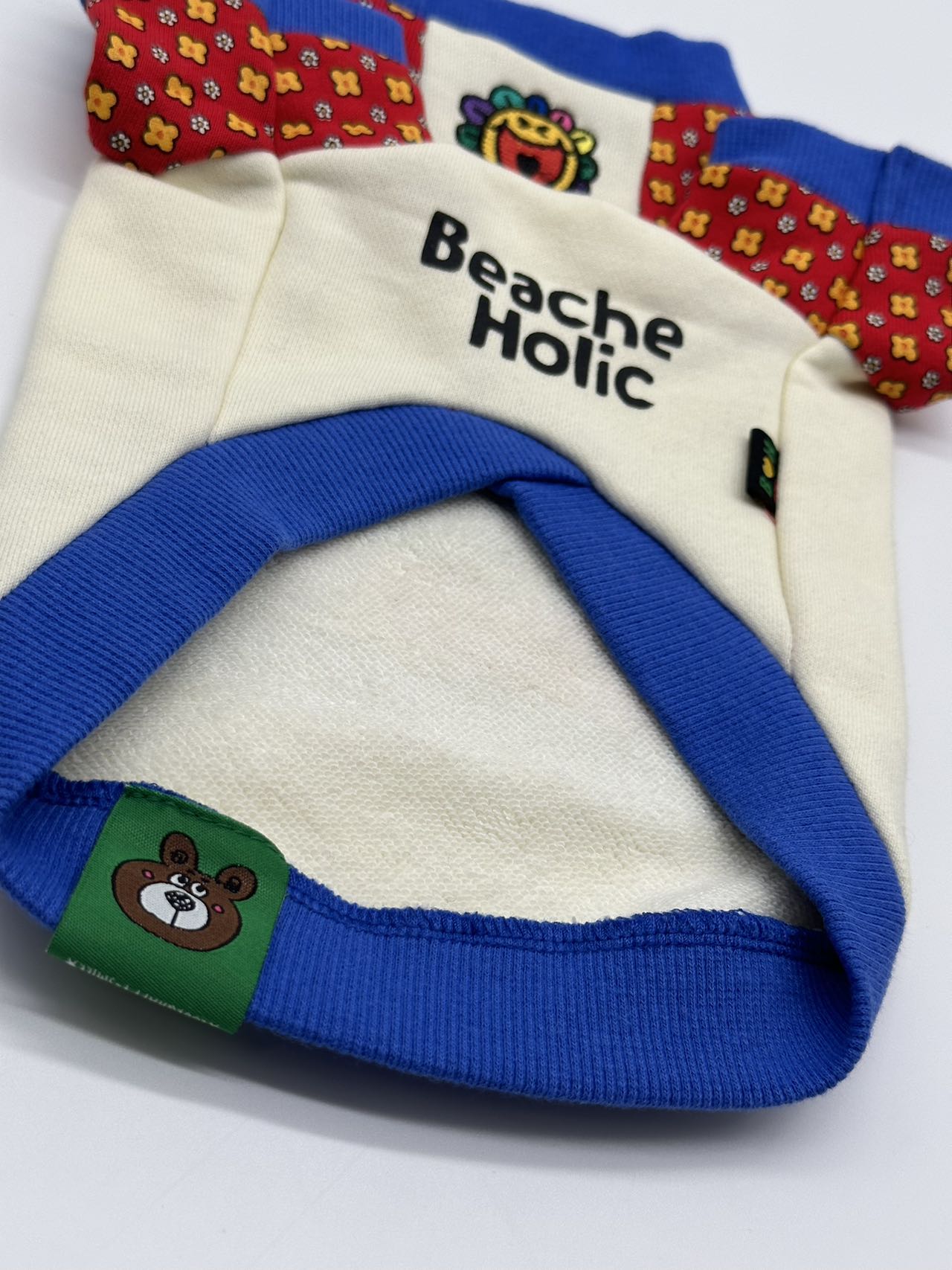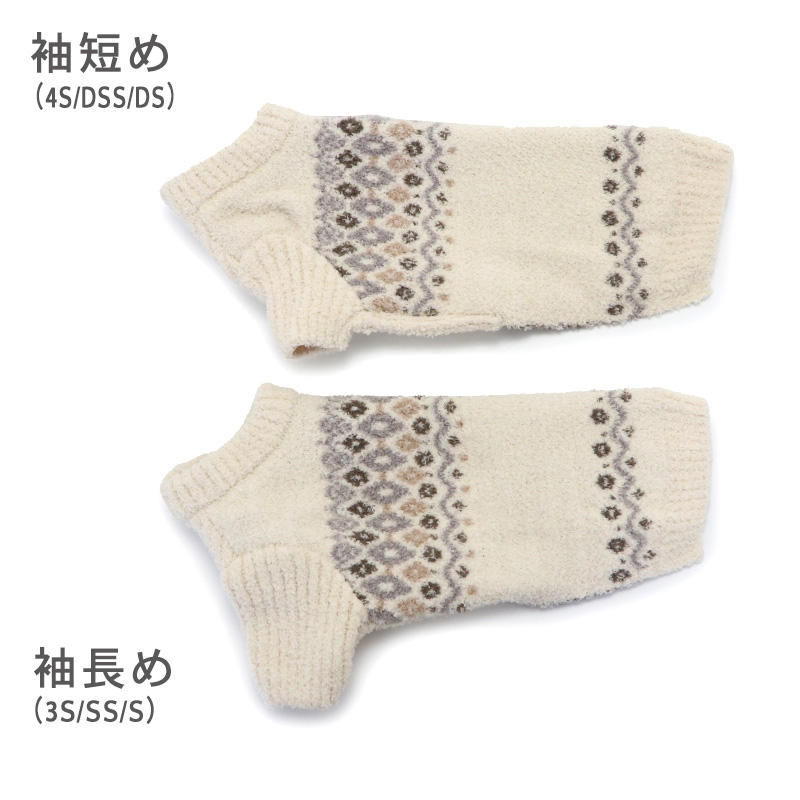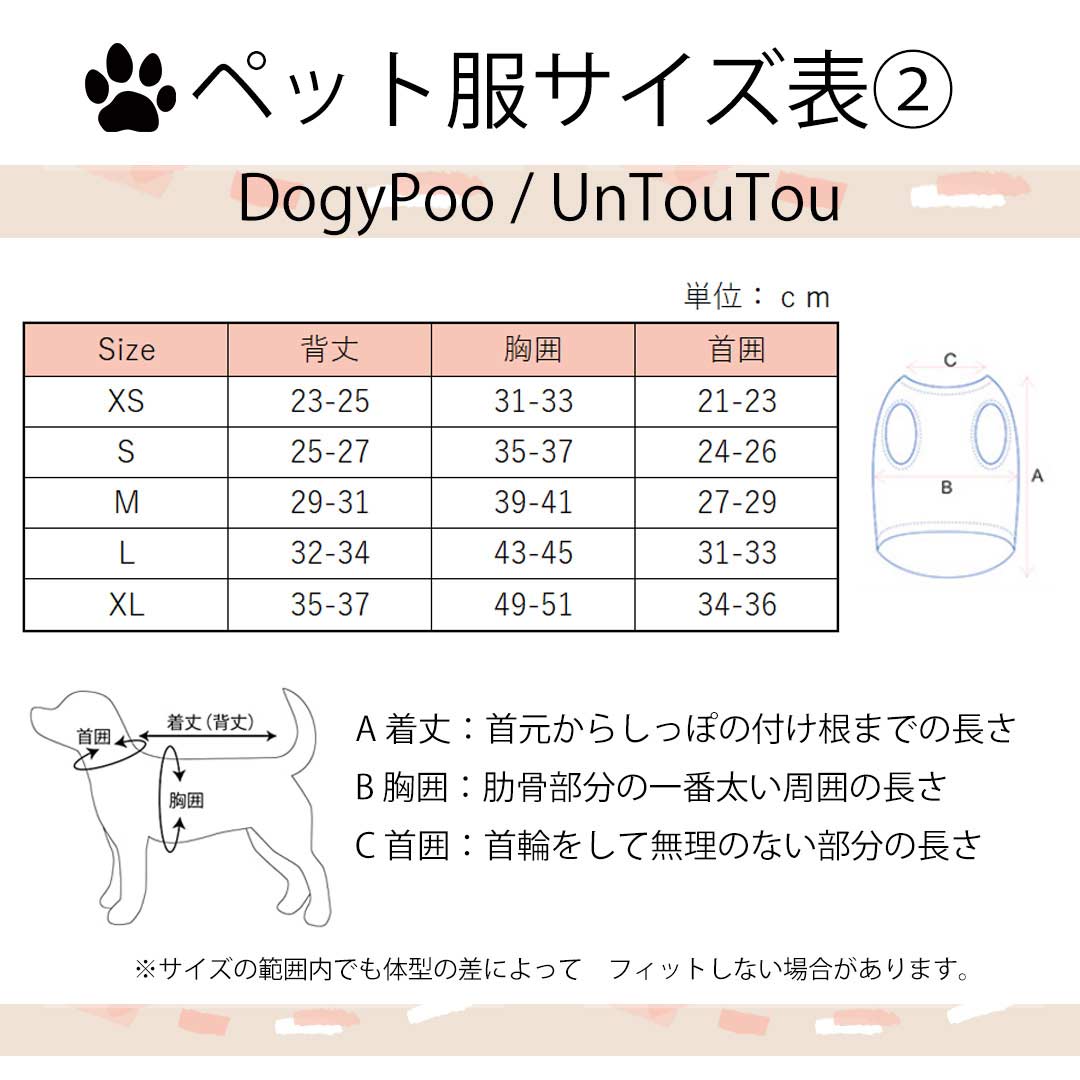ponpori / ドッグウェア / 白 / 秋冬 / 2枚
(税込) 送料込み
商品の説明
ご覧いただきありがとうございます。
☆こちら他フリマサイトにも出品中です。
即購入の前にお手数ですがコメントお願いいたします。
ponporiで3年くらい前に購入したものです。
まぁまぁ厚手のコットン生地なので秋冬用です。
同じもの2枚の価格です。
今回出品にあたり数回ホームクリーニングしました。
ウェアにも抜け毛の付着なしです。
胴長短足で寒がりなのでお尻までしっかりあっためてくれる身丈のウェアを探してましたが、かわいいものがなかなか見当たらなかったのでponporiさんにてオーダーメイドで作っていただきました。
が、秋に数回着用したのちあっという間に冬服に
なることが多く結局着用回数は10回もいかないまま月日が流れてますのでお譲りしたいです。
我が家と同じように身丈が長いものでノースリーブ、ハイネックなものを探されているオーナーさんがいらっしゃいましたらぜひ使っていただけたらと思います。
サイズは画像で確認されてください。
4枚目→ 胸周りと腹回りは2cm差です。
5枚目→ 毛玉取り器で開いてしまった穴が数箇所、落としきれなかったシミなど赤丸で囲ってます。
きれいなほうですが多少の使用感はあると思います、
画像で確認できないことはお気軽にコメントしてください。
お値引きはごめんなさい。
よろしくお願いします。商品の情報
| カテゴリー | ペット用品 > 犬用品 > 犬服・アクセサリー |
|---|---|
| 商品の状態 | やや傷や汚れあり |

ponpori / ドッグウェア / 白 / 秋冬 / 2枚 | フリマアプリ ラクマ

ponpori / ドッグウェア / 白 / 秋冬 / 2枚

ponpori / ドッグウェア / 白 / 秋冬 / 2枚

ponpori / ドッグウェア / 白 / 秋冬 / 2枚の通販 by apyuu|ラクマ

ponpori / ドッグウェア / 白 / 秋冬 / 2枚の通販 by apyuu|ラクマ

ponpori / ドッグウェア / 白 / 秋冬 / 2枚の通販 by apyuu|ラクマ

ponpori / ドッグウェア / 白 / 秋冬 / 2枚

ponpori / ドッグウェア / 白 / 秋冬 / 2枚の通販 by apyuu|ラクマ

ponpori / ドッグウェア / 白 / 秋冬 / 2枚の通販 by apyuu|ラクマ

ponpori / ドッグウェア / 白 / 秋冬 / 2枚の通販 by apyuu|ラクマ
在庫限り犬 服 pipi 防寒 シープボア ベスト フリース PIPI DOGS

楽天市場】「返品交換保証」 犬服 ニットセーター ドッグウェア 暖かい

☆無料&即発送☆人気☆新入荷☆愛犬秋冬服 フリフリインナーA 白 M
犬用 PAマガジオスノーフードパデッドオーバーオール つなぎ

楽天市場】\指定金額で100円から3000円OFF/ 冬服 トレーナー【POMII

楽天市場】犬服 秋服 冬服 犬の服 防寒着 ドッグウェア 厚手 裏起毛

楽天市場】犬 セール 犬 服 冬 ニット 【小型犬】 【中型犬】 【大型犬

楽天市場】【SALE! 半額50%OFF】犬服 犬の服 ペット 犬用服 ドッグ

楽天市場】【お買い物マラソン期間 ポイント10倍】 犬 冬服 セール

【楽天市場】【SALE! 半額50%OFF】犬服 犬の服 ペット 犬用服

楽天市場】「返品交換保証」 犬服 ドッグウエア 冬 もこもこ 暖かい

楽天市場】【SALE! 半額50%OFF】犬服 犬の服 ペット 犬用服 ドッグ

犬の服 ドッグウェア 犬 服 ドッグクローズ 秋冬 暖かい 防寒 もこもこ

楽天市場】犬 セール 犬 服 冬 ニット 【小型犬】 【中型犬】 【大型犬

楽天市場】「返品交換保証」 犬服 ドッグウエア 冬 もこもこ 暖かい

楽天市場】\指定金額で100円から3000円OFF/ 冬服 トレーナー【POMII

前ファスナーPOMIIジャージ 裏起毛 犬服 猫服 ドッグウェア トレーナー 厚手 スポーツウェア 秋冬 長袖 PAE0004 送料無料

楽天市場】犬 セール 犬 服 冬 ニット 【小型犬】 【中型犬】 【大型犬
犬の服 ドッグウェア 犬 服 ドッグクローズ 秋冬 暖かい 防寒 もこもこ ふわふわ 可愛い 二足 小型犬 中型犬 選べる 全3色 XS S M L XL 2XLPanni メール便対応

楽天市場】犬 セール 犬 服 冬 ニット 【小型犬】 【中型犬】 【大型犬
犬用 PAマガジオスノーフードパデッドオーバーオール つなぎ

楽天市場】「返品交換保証」 犬服 ドッグウエア 冬 もこもこ 暖かい

楽天市場】白(つなぎ・カバーオール|ドッグウェア):犬用品<ペット

chiaro / Dog Prime | *TukTuk* ~ 犬服ドッグウェア キャリーバッグ

楽天市場】レトロポンポンワンピース 中型犬用 犬服 ペットウェア 犬

楽天市場】\指定金額で100円から3000円OFF/ 冬服 トレーナー【POMII
犬用 PAマガジオスノーフードパデッドオーバーオール つなぎ

【楽天市場】【お買い物マラソン期間 ポイント10倍】 犬 冬服

楽天市場】犬 セール 犬 服 冬 ニット 【小型犬】 【中型犬】 【大型犬

☆無料&即発送☆人気☆新入荷☆愛犬秋冬服 フリフリインナーA 白 M





商品の情報
メルカリ安心への取り組み
お金は事務局に支払われ、評価後に振り込まれます
出品者
スピード発送
この出品者は平均24時間以内に発送しています














